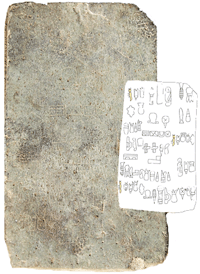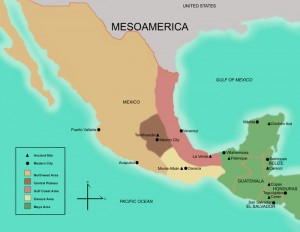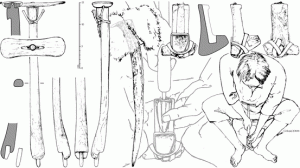Although many people only think of Egyptian hieroglyphics when discussing the origins of written language, there is evidence that written language systems had been developed independently of each other around the world. Artifacts suggests that the earliest forms of written language originated in Mesopotamia, China, and Mesoamerica. A recent find has opened the door for reanalysis and for questioning regarding the early written records of Mesoamerica and their influence in the development of the area’s early languages. In the early 1990s, while building a road, what is now known as the Cascajal Block was found in Veracruz, Mexico, where the Olmec civilization once stood. This stone block was taken care of by cultural authorities and was examined in 1999 and 2006.
Upon examination, archaeologists Carmen Rodriguez and Ponciano Ortiz revealed that the serpentine block contained sixty two images on one of its surfaces. After investigating the images on the block, they believed that an example of written text had been found. The pictures on the block appear to be arranged in a certain syntax, there are patterns and repeating images suggesting that the images are not just art or pictures but written language. Another interesting observation reveals that the block may have cleared or erased several times indicating possible personal use.
Although most agree that the images on the block are indeed evidence of a writing system, some controversy surrounds the dating of the block. The block was dated to around 900 BCE, this estimate was based on the pot sherds and other artifacts it was found with, so many do not trust that the true context of the artifact is known. If the dating holds true, then the Cascajal Block is the earliest evidence of written language in the Americas. This along with the fact that the images do not seem to connect to any other writing of the area or time period has added to the “mother-sister” debate regarding the Olmec civilization’s influence in Mesoamerica.
The discovery of the Cascajal Block and the debates surrounding it can help us understand how different archaeological approaches and circles of thought can be used to gain a deeper understanding of the artifact and the Olmec civilization. Starting with a functionalists approach the block’s possible purposes may be examined, and here experimental archaeology techniques may be used to understand the functionality of the block as a personal writing tool. From this type of investigation, more questions will arise and can be asked. We can approach these questions from a more structuralist or processual view by looking into the social structures of Olmec civilization and how written language, text, and literacy were affected and affected structures such as gender and class or everyday life. With these ideas in mind, what are the possible implication of the Cascajal Block?
References:
http://www.sciencemag.org/content/313/5793/1551.full
http://archive.archaeology.org/0701/etc/learn.html
http://archaeology.about.com/od/olmeccivilization/a/cascajal_block_3.htm
Photo 1: http://archive.archaeology.org/0701/etc/learn.html
Photo 2: http://www.famsi.org/maps/
Additional Reading:
http://www.sciencemag.org/content/313/5793/1610.full
http://archive.archaeology.org/0601/abstracts/olmec.html



